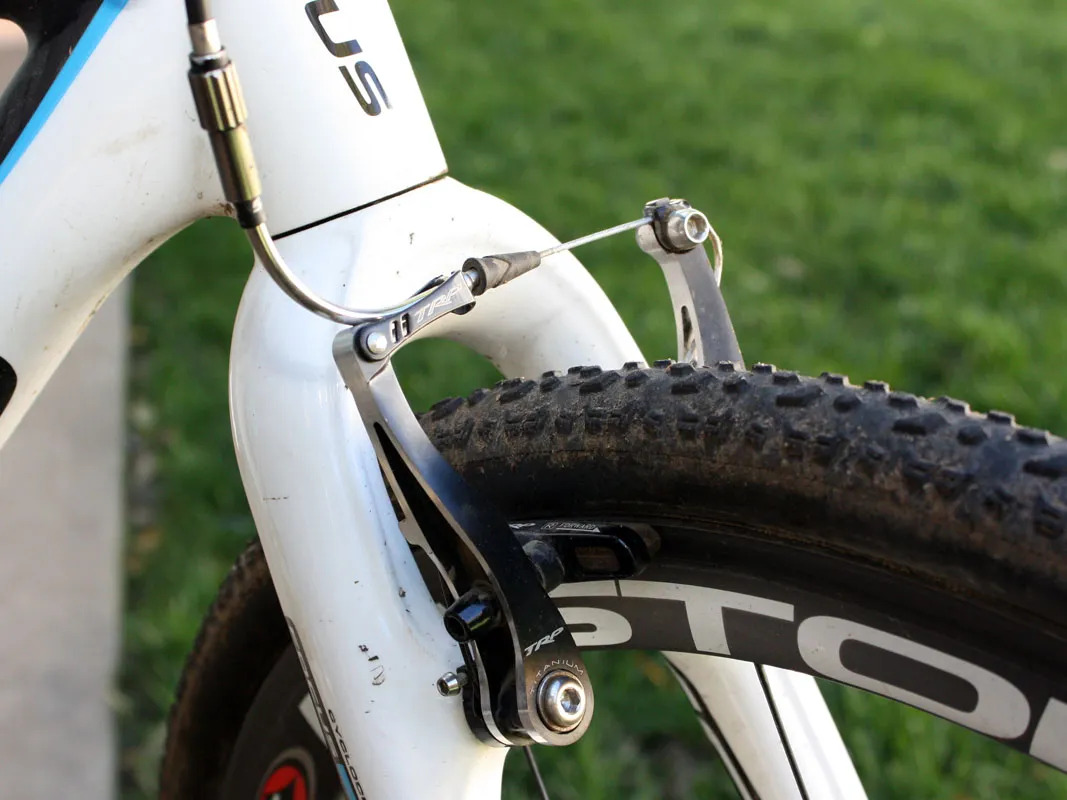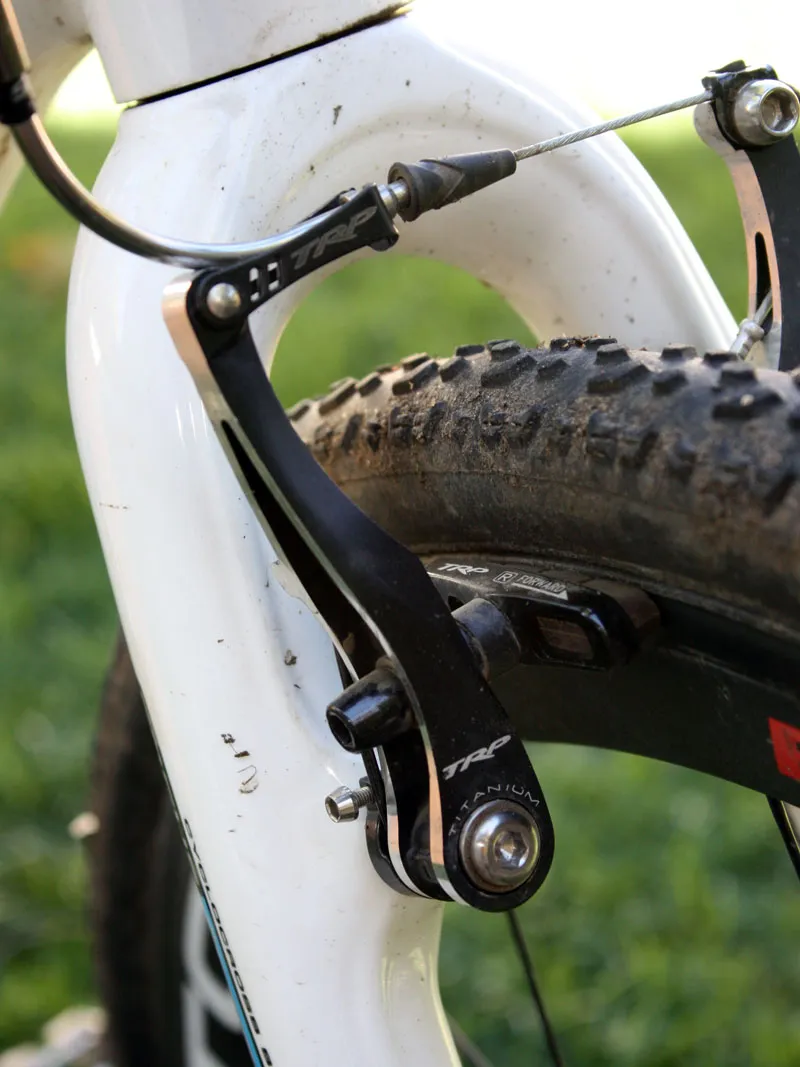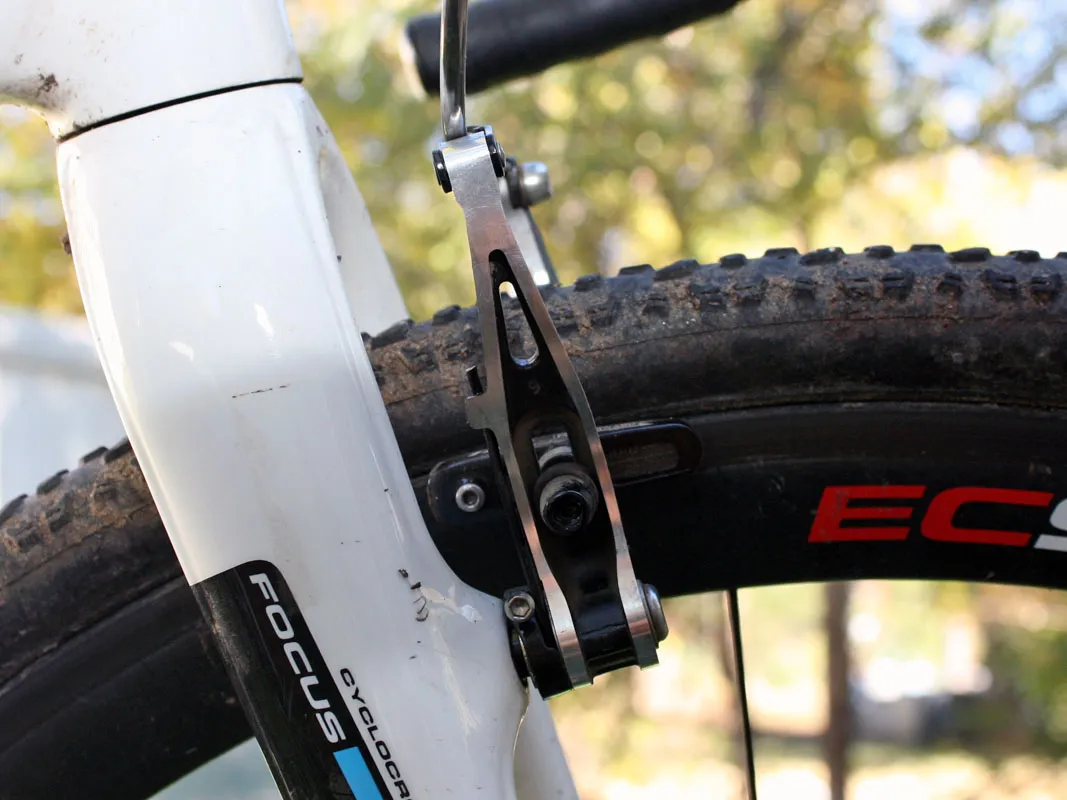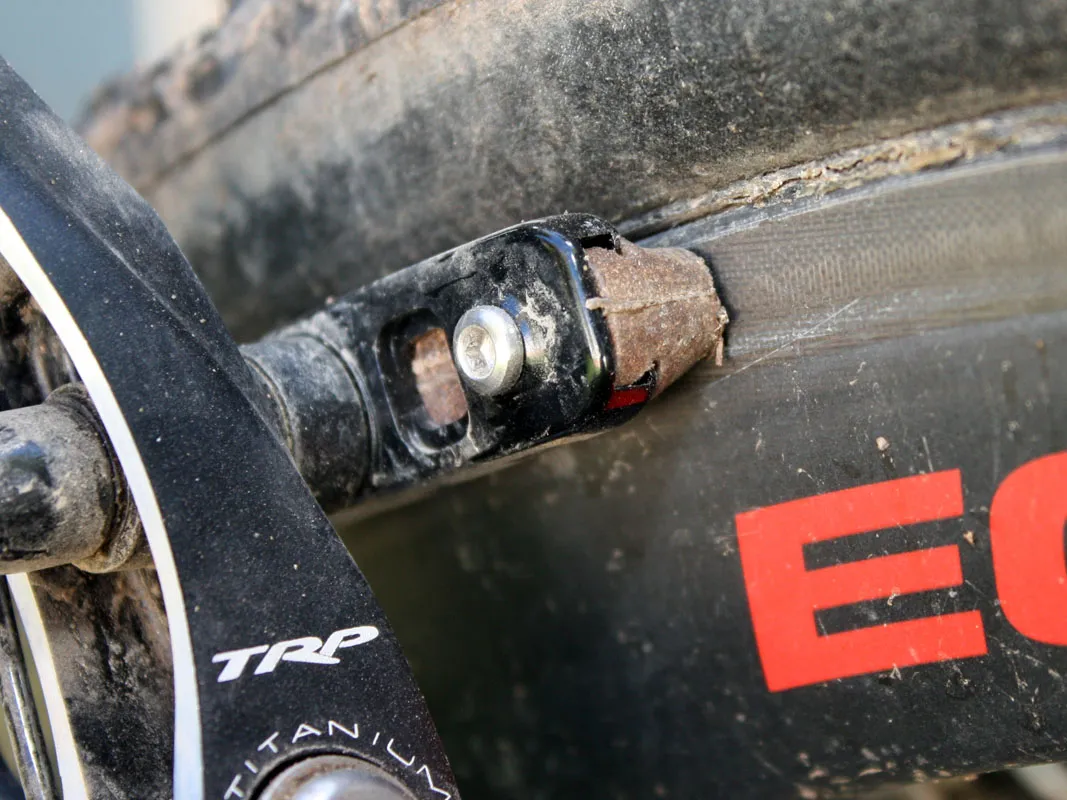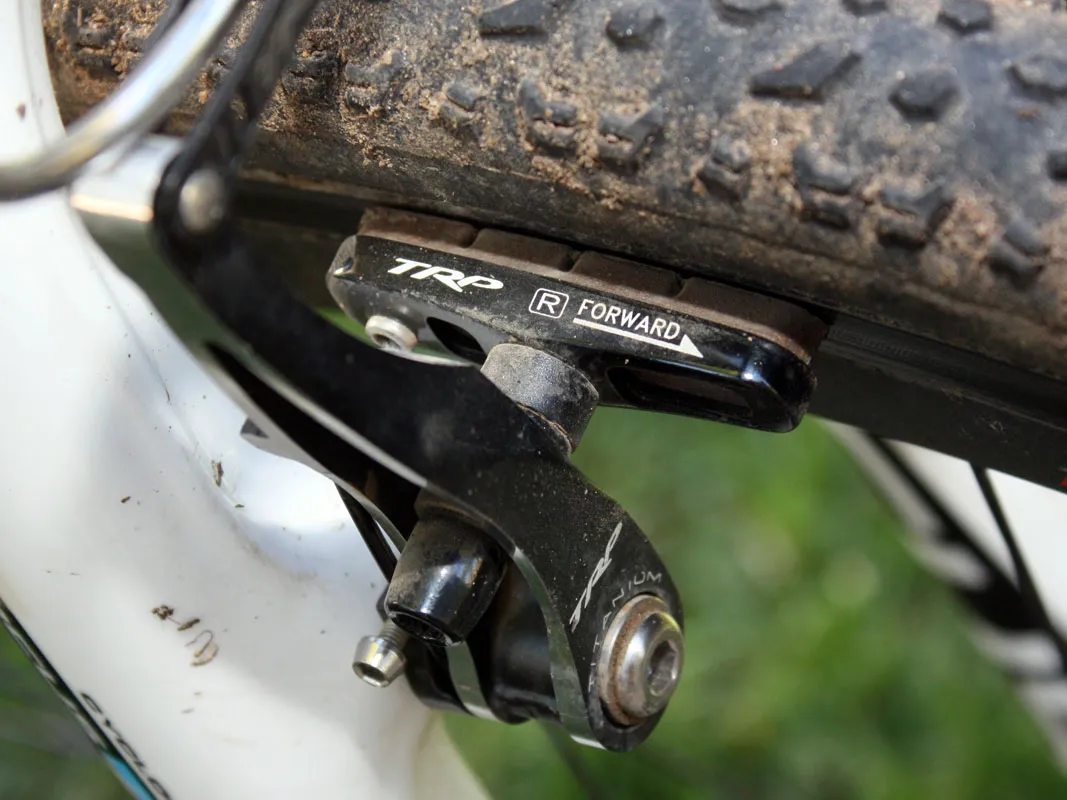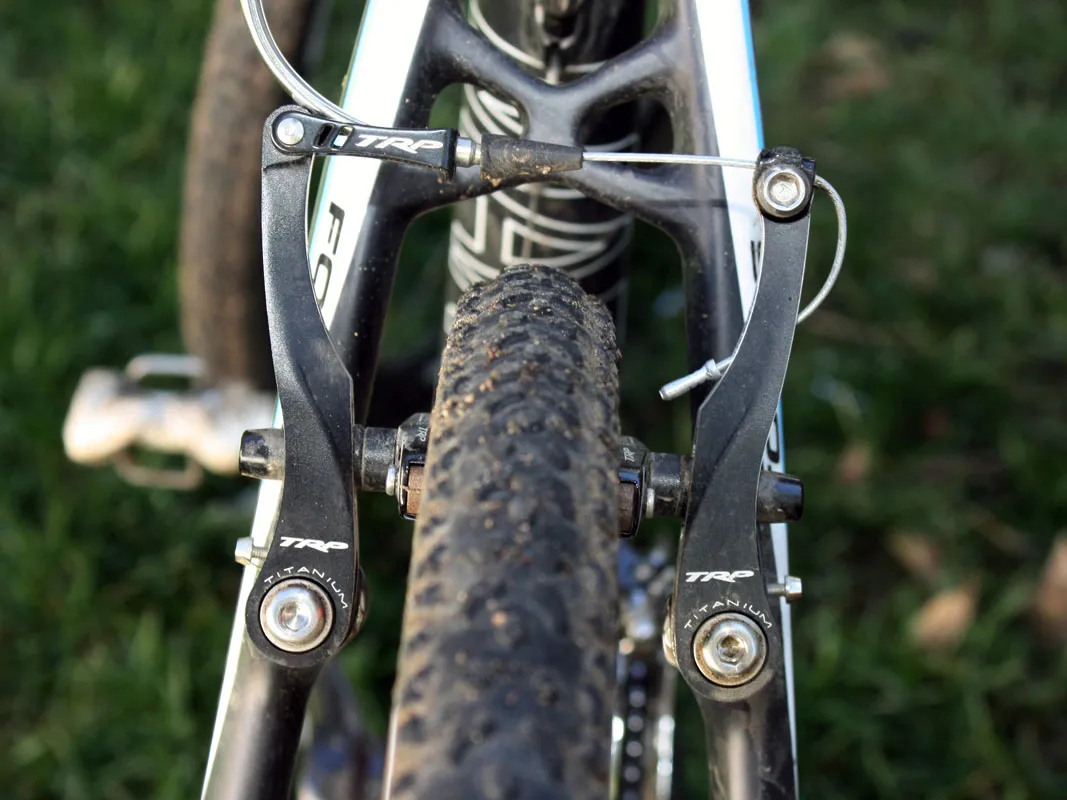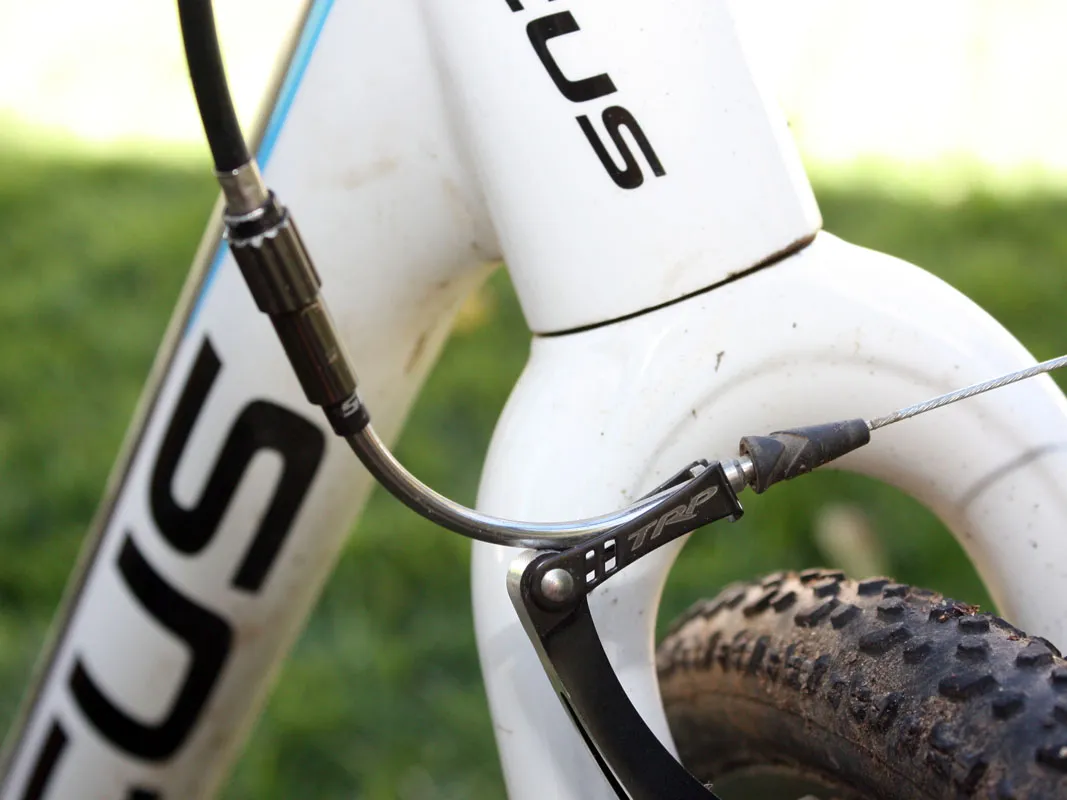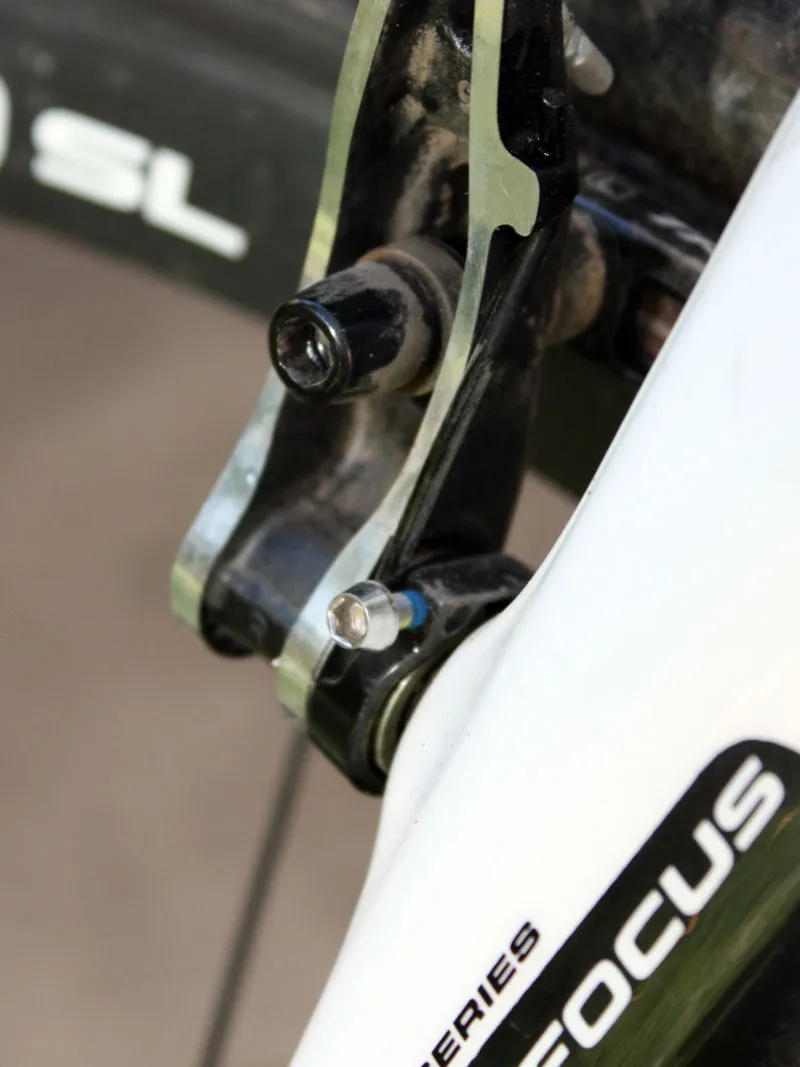Let's get one thing out in the open straight away: riding a cyclo-cross bike doesn't automatically mean having to deal with inadequate brakes, and careening uncontrollably into a tight corner isn't an inherent part of the sport. Case in point is TRP's CX 9 linear pull brakes.
In contrast to nearly all conventional 'cross cantilevers – especially Euro-style wide-profile ones – the CX 9's no-profile, high-leverage design offers extraordinary levels of stopping power. In fact, the difference is so significant that it can take several rides to get accustomed to it.
Pull the lever as you normally would and it's easy to lock up a wheel or pitch the rear end of the bike up while approaching a barrier. Once you're used to it, though, you can approach corners with a lot more heat than before and brake far later, thus ultimately coming through the other side faster.
Steep and loose descents in particular suddenly become child's play, whereas before they were often a futile exercise in forearm strength. With the CX 9s, you simply tug a little bit harder and you've got as much braking power as your tires can handle. As a side bonus, bypassing a steerer-mounted housing stop also virtually eliminates the possibility of brake shudder common to lesser brakes and lighter framesets.
The key to all that power is simple: leverage. The CX 9 borrows a page from mountain bike history, with tall, upright arms and a cable that runs directly from the top of one arm to the other. This provides the most direct transfer of force from cable to rim and no change in mechanical advantage as you dig deeper into the lever travel.
However, that power does come at the expense of modulation as there's more of an 'on-off' personality to the CX 9s relative to cantilevers that varies depending on pad choice. With the stock aluminum-specific pads in place, the CX 9s can be tricky to control, especially in low-traction situations like loose gravel or slick mud.
We got better results by swapping to harder compounds that were less grabby initially – in our case, TRP's own carbon compound for race wheels and SwissStop Rx pads for aluminum. Switching to harder pads also tempered the CX 9's other shortcoming: lever feel. When mountain bikes made the wholesale switch to linear pull brake calipers they were also accompanied by specific levers that pulled more cable.
TRP don't have that luxury so subbing in the CX 9s yields a much softer feel at the lever – even spongy in some cases and depending on setup. We got decent results with SRAM but a better feel with Shimano's revised-ratio STI levers. Either way it's acceptable but not exactly ideal – however, riders specifically looking for more power will likely be willing to put up with it.
That increased leverage also decreases pad clearance to the point where rims need to be nearly perfectly true in order to run rub-free, even when conditions are dry. Given the close tolerances, the pads don't let as much mud streak past in dirty conditions but the upside is that the brakes still work when needed. Moreover, the tall, upright arms actually seem to collect less debris than cantilevers as they're far away from the tire and also mirror the profile of the fork legs and seatstays to which they're attached.
Setup is brutally easy, with fully adjustable pad height and angle that allows for perfect rim contact (unlike more basic designs – including TRP's own EuroX range – that don’t offer true pad height adjustment). Spring tension is set by merely turning a 3mm Allen bolt on either arm, and TRP's inclusion of both 90° and 120° stainless steel noodles should accommodate most cable routing styles.
TRP's stock setup doesn't include a built-in barrel adjuster, but we were able to retrofit one to the ends of our set's noodles by swapping out the standard housing receiver for an alloy 4mm ferrule then plugging in a Jagwire inline adjuster – easy as pie.
Are the TRP CX 9s for everyone? Perhaps not as they're a tad finicky, deliver less-than-ideal lever feel and are just a bit heavier than other high-end brakes at 161g per wheel including pads and titanium hardware.
But if you're willing to deal with their relatively minor shortcomings and have the time and skill to set them up properly (and maybe some other pads to try out), they're a turnkey way to get gobs of braking power, plus they're surprisingly inexpensive at just US$129.99 for a full set, front and rear.
